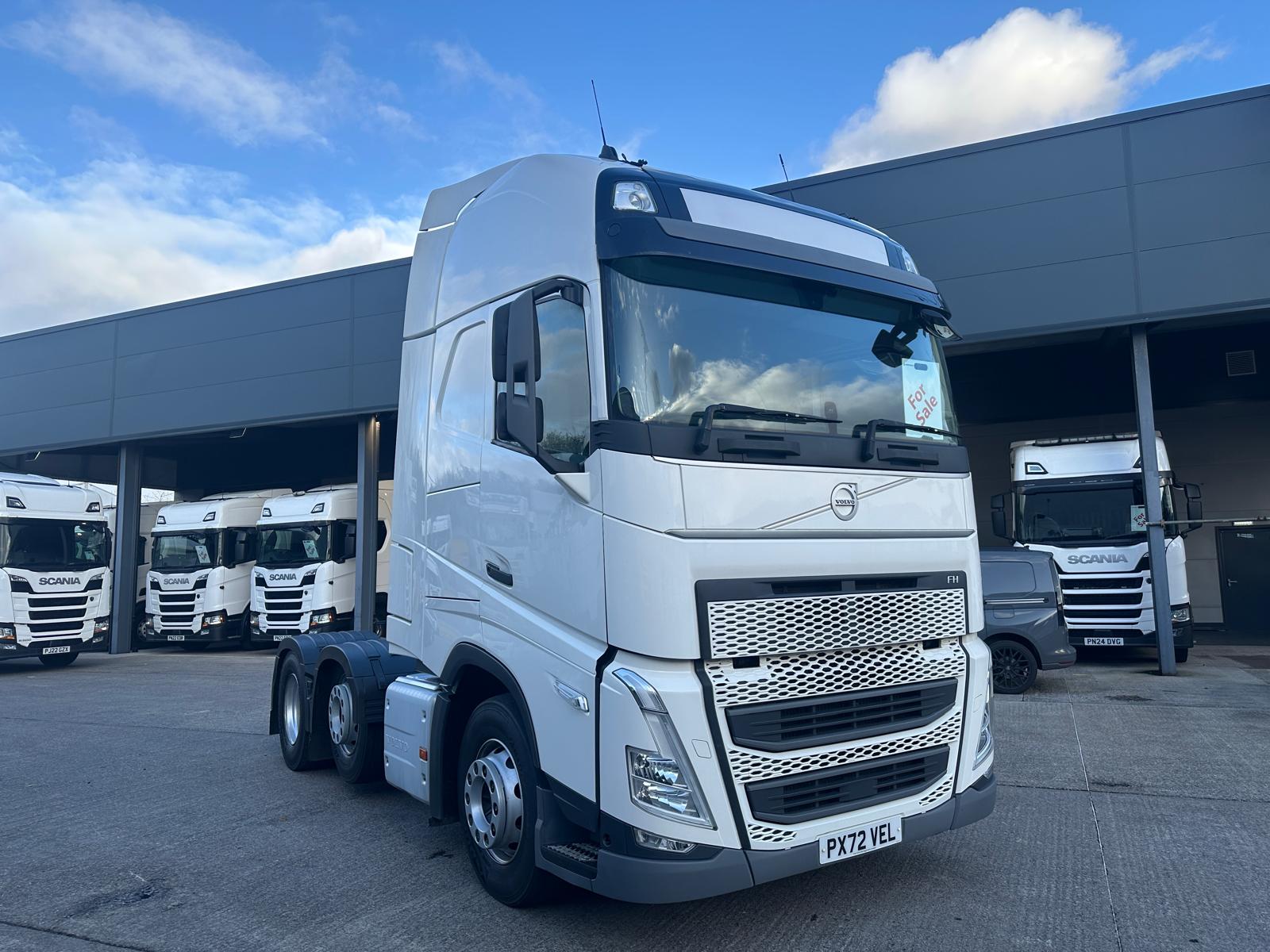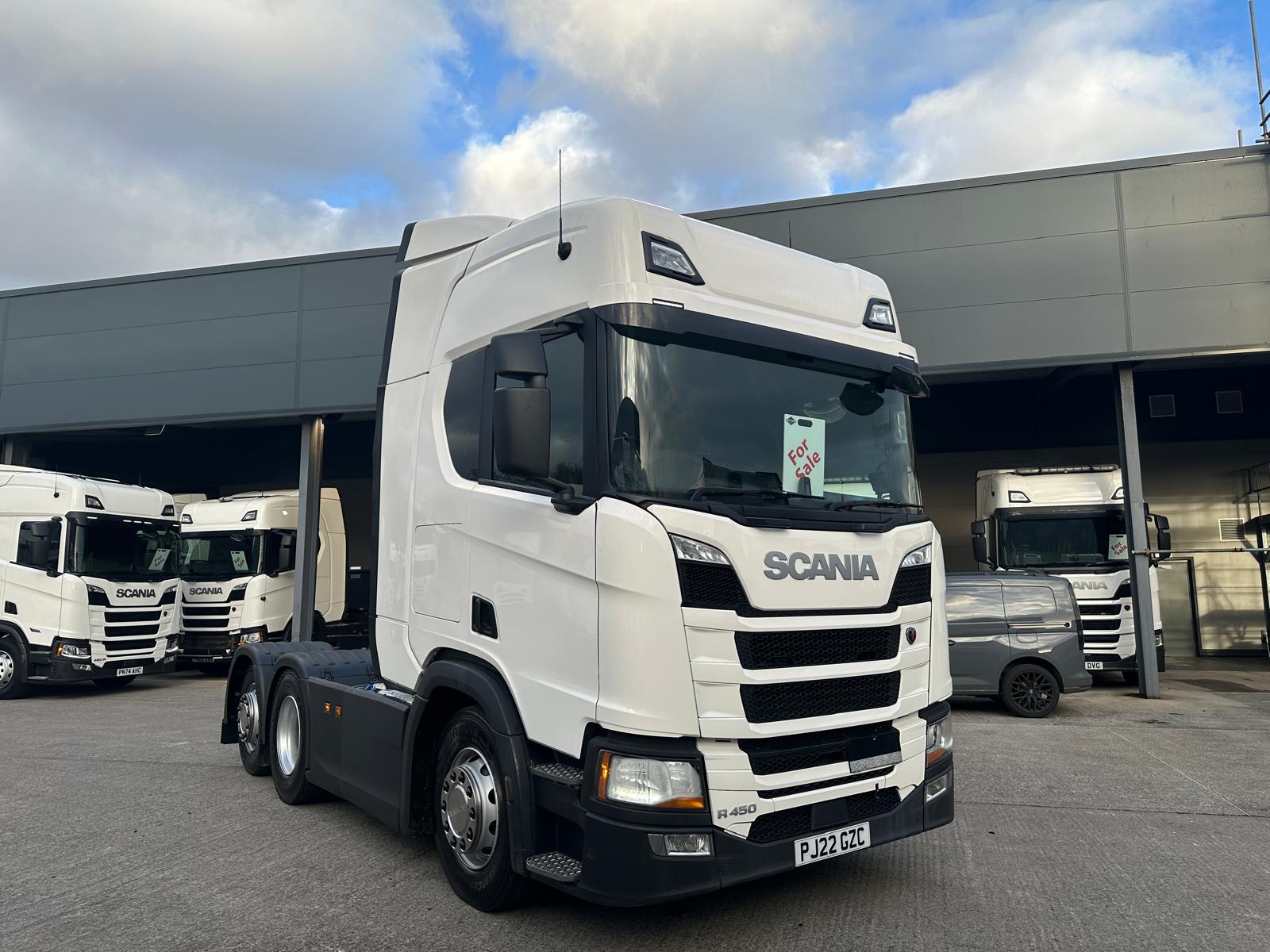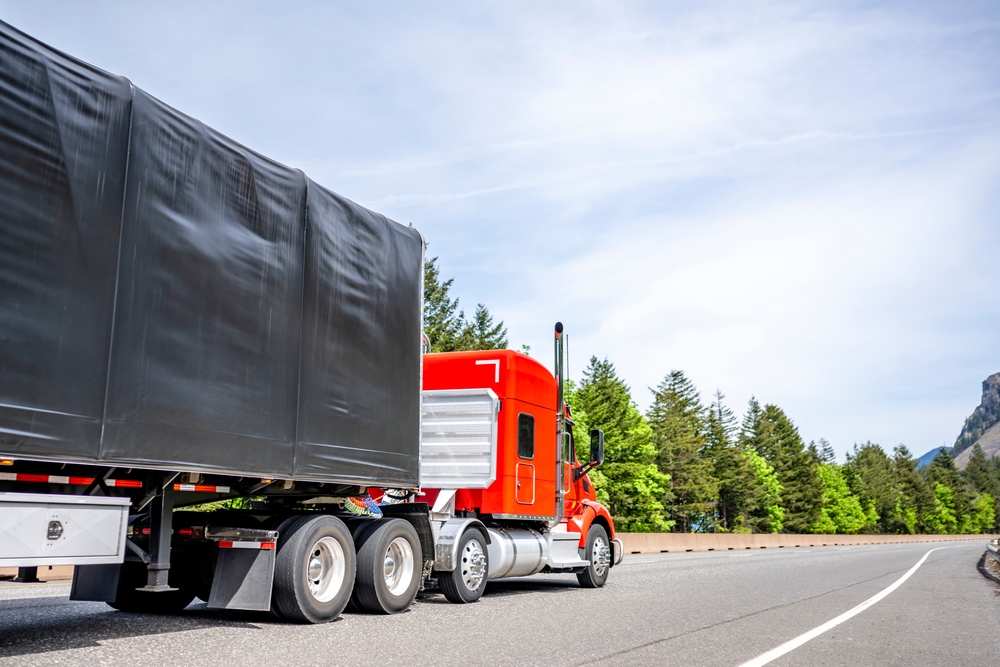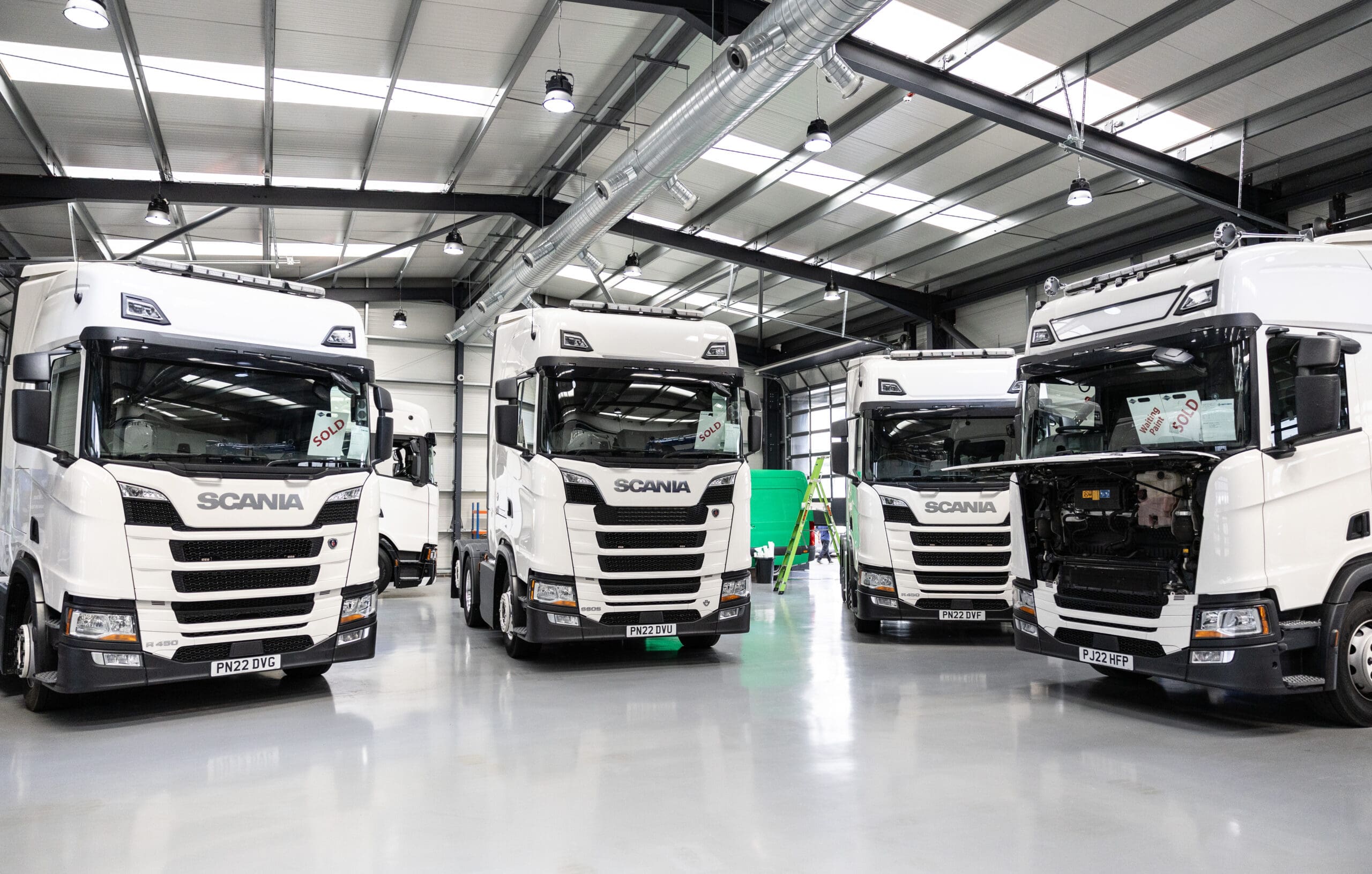Just as cars and motorcycles require different qualifications to drive, you need a specific truck driver’s licence to operate an HGV. But, with there being so many different types of trucks available on the market, it can be confusing to know exactly what truck licence you need. If you’re wondering how the world of truck licences works in the UK, you’ve certainly come to the right place.
At Smith Bros, we specialise in selling quality trucks for sale in the UK, providing our customers with outstanding vehicles to upgrade their fleets. Explore our exemplary collection of vehicles today, which includes quality Scania trucks, cutting-edge Mercedes-Benz lorries, as well as first-rate options from the likes of DAF and Volvo.
Whatever kind of truck you’re looking for, at Smith Bros we can help you find exactly what you need, no matter if it’s a tractor unit, a tipper, a flatbed truck or otherwise. Before buying from us, why not consider selling us one of your trucks in return to help you fund your next purchase? To optimise your fleet today, contact Smith Bros, and we can use our generations of industry experience to get you the best possible deal.
But, before all that, let’s delve into the nitty gritty of truck drivers’ licences.
HGV licence categories in the UK
Having a truck drivers’ licence is a little different from having one for a car. Where normal drivers will likely never have to apply for another driving licence apart from their standard issue one, things are a little more complicated when it comes to applying for a truck licence. There are three main HGV licences you can apply for.
| Licence type | Permissions | Permitted Vehicles |
| Class 1 (CE+E) | Operate a vehicle weighing 3,500kg (3.5 tonnes) or more with a trailer over 750kg (0.75 tonnes). | All types of articulated lorries. |
| Class 2 (C) | Operate a HGV that weighs over 3,500kg (3.5 tonnes). | All types of rigid lorries. |
| Category C1 | Operate a vehicle weighing between 3,500 and 7,500kg (3.5 and 7.5 tonnes) with a trailer up to 750kg (0.75 tonnes). | Medium-sized goods vehicles or ambulances. |
| Category C1+E | Operate a vehicle weighing between 3,500 and 7,500kg (3.5 and 7.5 tonnes) with a trailer that weighs over 750kg (0.75 tonnes). | Medium-sized goods vehicles with an added trailer. |
But, don’t panic, we’ve provided more information with a breakdown of each license type below.
Class 1 (Category C+E licence)
By earning this licence, a truck driver can operate a vehicle that is 3,500 kg (3.5 tonnes) or more with a trailer over 750kg (0.75 tonne). The maximum combined weight for a vehicle driven with a category C+E licence is 44 tonnes. The C+E licence is ideal for those wishing to specialise in driving articulated lorries – large vehicles, such as flatbed trucks, that are ideal for hauling goods of all sizes over long distances.
Class 2 (Category C licence)
Drivers who earn the category C licence can operate an HGV that weighs over 3,500 kg (3.5 tonnes) but cannot exceed 32 tonnes. These licences are perfect for driving rigid lorries, which can include fire engines, cement mixers, and refuse collection vehicles. Mostly, category C licences are sought by lorry drivers looking to carry out intercity deliveries in rigid trucks.
Category C1
This is the most basic type of HGV licence, offering drivers the ability to operate a vehicle that’s between 3,500 and 7,500kg maximum authorised mass (MAM) with a trailer up to 750kg. This licence is ideal for drivers who are looking to fulfil a specific role, such as a supermarket delivery driver or an ambulance driver, for example. If you hold a driving licence that is dated before 1997, you are automatically granted the right to drive these vehicles.
Category C1+E
This licence allows you to drive any C1 category vehicle with the addition of a trailer that weighs over 750kg. To legally drive using this licence, the MAM of both the vehicle and the trailer cannot exceed 12,000kg.
What other HGV licences are there in the UK?
If you’re in the haulage industry, it’s likely that you’ll only be concerned about category C+E, C and C1 licences. But, for a comprehensive understanding of other licences that are available to operate large vehicles aside from HGVs, consider categories D and D1, as well as B+E.
- Category D and D1: These two categories refer to passenger vehicles. A D licence allows you to operate large buses and coaches, whereas a D1 licence lets you drive a minibus with up to 16 seats.
- Category B + E: This licence allows you to operate a car and a trailer/caravan with a MAM of 3,500kg (3.5 tonnes).
How to obtain a truck drivers’ licence in the UK
Driving an HGV is a big responsibility, so obtaining the proper licence is a little more complex than earning your car licence. To obtain a truck driver’s licence, in accordance with government regulations, you need to:
- Hold a full car licence.
- Be over 18.
- Get a Driver Certificate of Professional Competence (CPC).
Obtaining full driver CPC is essential if you want to operate an HGV, bus or coach as part of your full-time job. Depending on whether you have previously qualified for full driver CPC, there are five different tests that need to be completed.
There has been an array of changes to CPC in 2025, so it’s worth checking to see if the process remains the same for you before you begin.
Steps to obtaining your licence
If you’ve never applied for an HGV licence before, the steps to obtaining the certification will involve the following:
- Apply for a provisional HGV licence by ordering forms D2 and D4 from the Driver and Vehicle Licensing Agency (DVLA).
- Apply and complete an HGV theory test – this will include a hazard perception test and vehicle safety inspection.
- Undertake practical training – this can take just 5 days to complete with a certified training provider.
- Undertake and complete your practical driving test. This will include a practical test with specific manoeuvres, as well as a vehicle safety questionnaire.
- Once you have obtained your full licence, professional drivers will need to complete 35 hours of CPC training every 5 years to maintain their licence.
What other qualifications do you need to be a truck driver?
To become a truck driver, the two essential qualifications are a full driver CPC and either a C, C1 or a C+E driving licence. But, there are also specialist training courses you can undertake that will allow you to expand your skillset and drive a selection of other specific vehicles. These two qualifications include:
- ADR: Standing for Accord Dangeroux Routier, an ADR qualification allows drivers to transport goods that are considered ‘dangerous’, including flammable liquids, corrosive substances and more. To earn this, you will need to pass an exam to get an ADR driver card and complete any necessary additional training.
- HIAB: After you partake in HIAB training, you’ll be able to operate a crane truck. This versatile qualification will allow you to work in different industries, permitting the transportation and specialist loading and unloading of construction materials, natural resources for forestry jobs and much more.
What is the cost of obtaining an HGV licence?
The cost of obtaining an HGV licence, including the cost of the final test, can vary drastically from one provider to the next, with the price going up substantially thanks to the cost of the training. This often results in a bill that’s in the multiples of thousands, largely thanks to factors such as the cost of the instructor’s time and the fuel surcharge. The price of training per licence can be approximately broken down as follows:
- C+E licence: £2700
- C licence: £1700
- C1 licence: £1000
How to renew an HGV licence in the UK
Truck drivers are legally required to renew their HGV licence every 5 years if they’re under 45, largely for medical and safety reasons. This process is different depending on whether an individual is above or below the age of 45.
Renewing an HGV licence for under 45s
To renew or change your truck licence if you’re under the age of 45, you need to complete and return a D47PU (an application for lorry renewal) – this form will be sent to you 56 days before your driving licence runs out. Once complete, send this form back for free together with your current licence.
Renewing an HGV licence for over 45s
To renew your truck licence if you’re 45 or over, the process is similar. The key difference is that 56 days before your licence expires, you will be sent not 1, but 2 forms – a D47P and a medical examination report called a D4. The D47P can be completed by yourself, but a doctor must complete the D4 before you can return both forms. Doctors and other health professionals will charge approximately £50 to carry out a D4.
Got your licence? Now, buy your truck!
Once you’ve got your licence, you should consider Smith Bros to be your very first port of call to secure a quality truck for all your needs. No matter which licence you’ve secured, we have the HGVs available for sale that can optimise the operations of any business. With 50 years of expertise under our belts, we’re always ready to help.
You don’t just have to take our word for it, either. Our professional and quality services have been praised by countless haulage businesses across the country who have been happy to speak of our top-quality service:
“Brian Mansell Forwarding Limited would like to thank Steve Smith and Smith Bros for 29 years of supplying Scania tractor units to the company. We trust Smith Bros for the supply of our vehicles and would highly recommend their services”.
On top of our broad range of trucks for sale, we also offer specialist services that will help to make your new purchase feel just right. If you want to create a smart fleet of uniform trucks, why not consider our painting and wrapping service that will allow you to adorn your new vehicle with your company colours and logo. Or, you could consider a premium custom job that will provide you with a lorry that is unmistakably yours.
No matter what you need, our decades of experience are sure to lend a hand.
FAQs
What is the difference between an LGV and an HGV?
In the UK, a heavy goods vehicle (or HGV) is exactly the same as a large goods vehicle (or LGV) – both refer to a truck that’s over 3,500kg (3.5 tonnes) in gross combination mass (GCM). Confusion between the two terms largely comes across Europe since LGV refers to Light Goods Vehicles that can only transport under 3,500kg.
What is the difference between a Class 1 and Class 2 HGV licence?
Put simply, individuals who carry out a Class 1 (C+E licence) can drive articulated lorries that haul heavier loads than people who choose to hold a Class 2 (C licence). By comparison, a C licence only allows you to drive rigid vehicles. Since a Class 1 licence is better suited to long-distance haulage, such a qualification will open someone up to a wider range of better-paid career opportunities.
Do I need a full driving licence before getting a truck licence?
Yes, to be eligible for a HGV licence of any kind, you first need to have a full, standard driving licence (also known as a category B licence).
Can you go straight to applying for a Class 1 licence?
As of November 2021, you no longer need to obtain a Class 2 licence before applying for a Class 1 licence. This change was brought in order to try and resolve the increasing shortage of HGV drivers in the UK.
Why is HGV training so expensive?
In order to secure an HGV licence, you must first go through training, which can cost a significant amount of money. While this cost may seem extravagant, when considered as an investment in a future career, the cost seems more manageable. The cost of carrying out the medical and performing the theory is relatively low, but training costs considerably more, thanks to:
- The time of the expert instructor.
- The cost of the fuel.
- The maintenance of the vehicle.
- Final test fee.
How much can you earn as an HGV driver in the UK?
How much you can earn as an HGV driver in the UK depends on a number of factors, including where you operate in the country and what kind of licence you hold. If you’re an experienced truck driver with a Class 1 licence working out of London, you could be earning around £40,000 a year. But the average HGV driver will earn approximately £32,000.






